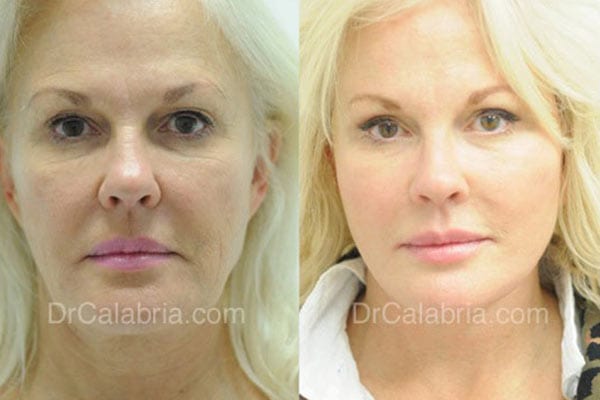
A facelift, or rhytidectomy, is a surgical operation intended to rejuvenate the lower face and neck by tightening the sagging skin on the face and neck. To some extent, a facelift can also help with folds around the mouth and jawline.
The procedure can be performed under local anesthesia or general anesthesia, depending on the extent of the surgery.
Table of Contents
What to Expect From a Facelift

A facelift Beverly Hills can reverse some of the most apparent effects of aging on your face and neck, such as:
- Sagging facial skin due to skin relaxation
- Development of jowls along the jawline
- Intensification of the fold lines that go between the mouth corner and the nose
- Fallen or disappeared fat
- Loose skin and extra fat of the neck, which can manifest as a dual chin or turkey neck
Good Candidates for a Facelift Surgery
You are a candidate for a facelift if you are generally in good health, do not smoke, have a positive attitude towards the procedure, and have reasonable expectations about the procedure results.
How Should You Prepare for a Facelift?
You may be requested to get laboratory tests or a medical assessment to prepare for a facelift. You may also be required to take certain medications or adjust the medicines you are already taking. In addition, your doctor may request you to apply specific products to the skin preoperatively, quit smoking, and refrain from taking aspirin and anti-inflammatory drugs.
This is because these substances can raise bleeding and bruising.
You are required to make arrangements for a companion or member of your family to accompany you to your surgical procedure and to spend the first night after surgery with you.
Steps of a Facelift Procedure
Step 1: Anesthesia
Your surgeon will give you medication to ensure your comfort throughout the operation. Intravenous sedatives and general anesthetics are both options. You can trust your doctor to advise you on what’s best for you.
Step 2: The Incision
Facelift incisions are performed per the patient’s planned procedures and individual needs. The following are options:
- Limited incision: Originates in the hairline above the ear and is shorter overall. It curves in front of the ear, stopping short of the bottom scalp.
- Traditional facelift incision: Begins at the temples. It wraps in front of the ears and continues behind them. If you want to change the way your neck looks, your surgeon may make an incision there.
- Neck lift incision: The beginning point is in front of your earlobe. It wraps around the ear and extends down into the lower scalp. A second cut is made just below the mouth.
3. Closing the Incisions
Sutures, either dissolving or requiring removal in a few days, will be used to close the incisions. To ensure a tighter seal, some surgeons utilize skin glues. The scars from a facelift procedure are not noticeable once they have healed because they have hidden inside the hairline and the normal creases around the ear.
4. Seeing the Results
After the first post-facelift phase of swelling and bruising has subsided, the procedure results can be seen. Not only will you feel better about one, but you will also look younger and more refreshed after you’re done.
Frequently Asked Questions
What areas of the face benefit from a facelift?
A facelift effectively reduces the appearance of sagging skin in the lower face, such as the jowls, neck, nasolabial folds, and submental areas.
Lines and creases around the eyes can be reduced with facelift surgery, but an eyelid lift is the most effective method. To achieve a more balanced look, a brow lift can be performed in conjunction with the facelift to smooth out creases in the forehead.
Is a facelift painful?
Thanks to general or local anesthetic, you will be completely pain-free throughout the operation. Your doctor will provide pain medication to help you feel better after surgery and reduce the risk of complications.
What distinguishes a male facelift from a female one?
Due to their unique facial structures, men and women can expect varied results from their facelifts.
What are the side effects of a facelift?
A hematoma or blood deposit underneath the skin is the most frequent problem after a facelift. However, this problem only affects about 1% to 5% of patients. Hematomas, while unpleasant, are treatable. Facial nerve damage is possible but uncommon. In most cases, nerve damage is very transitory, and full recovery might take anywhere between a few days to a year. Infections, skin loss, unsightly scars, and asymmetry are all possible, albeit less frequently.
What is the average recovery time for facelift patients?
After around two weeks, most patients are healthy enough to resume normal activities. Pain and swelling can last anywhere from a few days to a few months, depending on the individual. Because of the link between elevated blood pressure and prolonged edema, doctors recommend waiting for at least three weeks before returning to physical activity.



